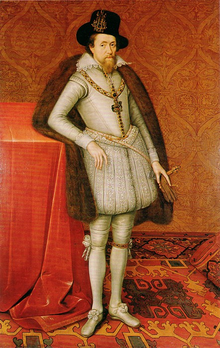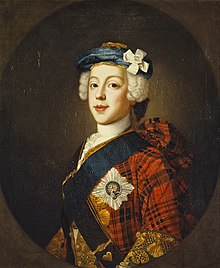History of the Scottish Episcopal Church
The history of the
Origins of Christianity in Scotland
In 563
The Scottish church would continue to grow in the centuries that followed. It was not until the 11th century, that
Reformation
The
The Scottish Episcopal Church had its origins in 1582 when the
Episcopal government maintained

In 1584
When
However, the
The excluded bishops were slow to organize the episcopalian remnant under a jurisdiction independent of the state, regarding the then arrangements as provisional, and looking forward to a reconstituted national episcopal Church under a 'legitimate' sovereign (see
From the Union of 1707

In 1707 Scotland and England were united into a single Kingdom of Great Britain. The Scottish Episcopalians Act of 1711, which protects the Episcopal Communion, marks its virtual incorporation as a distinct society. But matters were still complicated by a considerable, though declining, number of episcopalian incumbents holding the parish churches. Moreover, the Jacobitism of the non-jurors provoked a state policy of repression in 1715 and 1745, and fostered the growth of new Hanoverian "qualified" congregations, served by clergy episcopally ordained but amenable to no bishop, who qualified themselves under the act of 1712. This act was further modified in 1746 and 1748 to exclude clergymen ordained in Scotland.
These causes reduced the Episcopalians, who included at the Revolution a large section of the people, to what is now [when?], save in a few corners of the west and north-east of Scotland, a small minority. The official recognition of George III on the death of Charles Edward Stuart in 1788, removed the chief bar to progress but the Episcopal Church had been reduced to no more than four bishops and about forty priests. The qualified congregations were gradually absorbed. In 1792 the penal laws were repealed, but clerical disabilities were only finally removed in 1864.
The Book of Common Prayer came into general use at the Revolution. The Scottish Communion Office, compiled by the non-jurors in accordance with primitive models, has had a varying co-ordinate authority, and the modifications of the English liturgy adopted by the American Church were mainly determined by its influence. [citation needed]
Among the clergy of post-Revolution days the most eminent are
The Church enabled the creation of the
There were 356 congregations, with a total membership of 124,335, and 324 working clergy in 1900. No existing ministry can claim regular historic continuity with the ancient hierarchy of Scotland, but the bishops of the Episcopal Church are direct successors of the prelates consecrated to Scottish sees at the Restoration.
References
- ISBN 0-85683-089-5.

